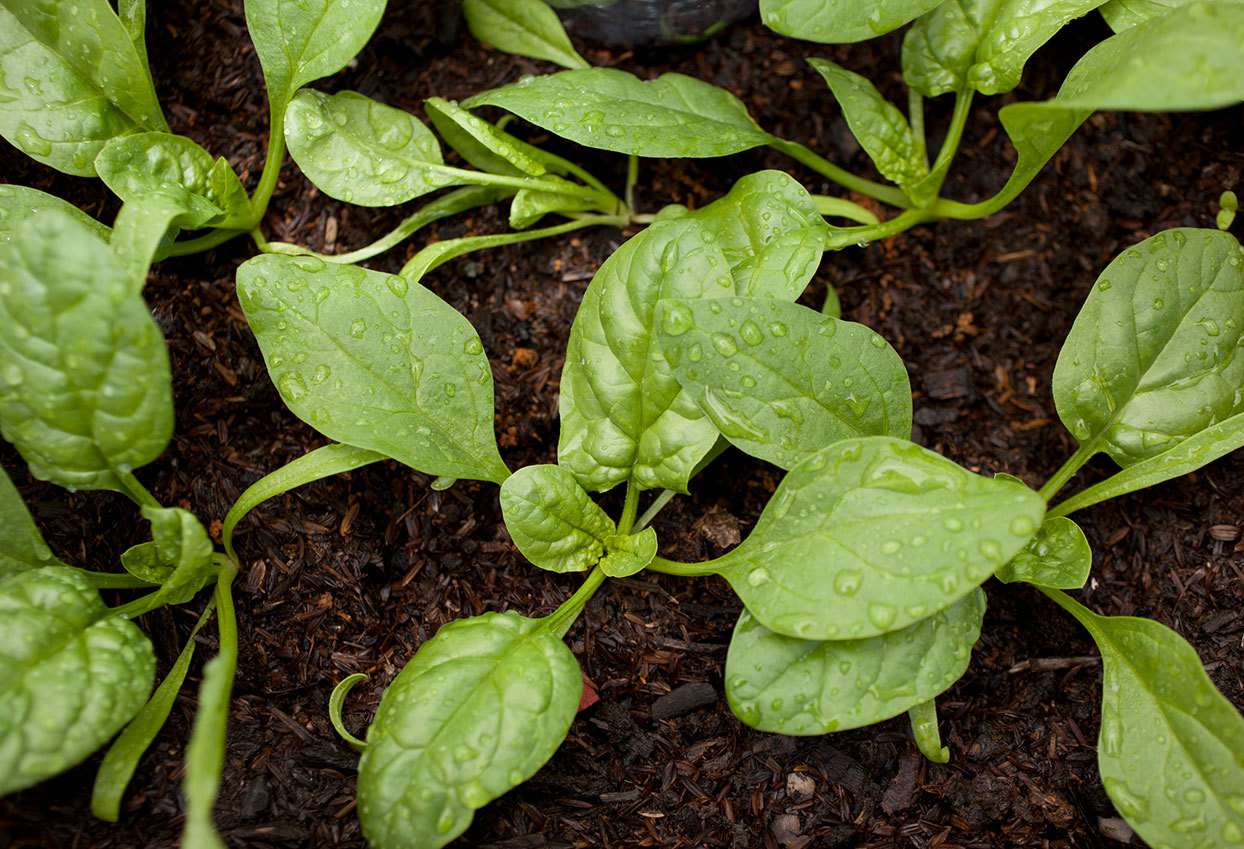Spinach sprints from the garden soil to the table in just over a month, making it satisfying to grow. It's also a fairly easy plant to manage and harvest, extending that satisfaction from the garden to your dinner plate. And with the seemingly endless number of recipes that call for bundles of one of our favorite leafy greens, letting this plant take root is a no-brainer. Here's how to grow spinach.
When to Grow Spinach
Spinach is an annual crop. That means it has a one-year life cycle and has to be replanted each year. Typically, it needs six weeks of cool weather from seeding to harvest. In most climates, it can be planted in early spring and early fall. For warm-weather climates, it can be planted in the winter.
Spinach thrives in temperatures between 50 and 75℉ and it does not like hot weather. If you're starting your seeds outdoors, it's best to get started five weeks before the last frost or when the ground is just warm enough that you can work the soil. If you're planting for a fall harvest, it's best to plant your seeds about six weeks before the first frost.

How to Sow Spinach
Whether you're planting directly in the ground, in a raised bed or in a container garden, spinach flourishes in well-drained soil. It should be rich in organic matter which means you may need to amend your soil with your own compost. If you don't compost at home, you can buy an organic soil mix from a garden center or nursery.
Before you plant or transplant your spinach outdoors, pick a spot for your plants that is either full sun or light shade for the best results.
If you're starting seeds indoors:
- Plan to sow your seeds about three weeks before you want to transplant them outdoors
- Plant seeds about one inch apart
- Cover with a thin layer of soil
- Water well and keep the soil moist
- When you transfer the seedlings outdoors, space them about 6 inches apart
If you're planting seeds outdoors:
- Sow seeds in rows about 18 inches apart
- Cover with a thin layer of soil
- Water well
- When the seeds sprout, trim back the seedlings so that they are 6 inches apart (this is called "thinning")
The time it takes for the plants to germinate depends on the temperature. When it's warm (up to 70℉), it can take a little over a week. When it's cooler (as low as 50℉), it can take up to three weeks to start seeing the green leaves.

Getty Images
When to Harvest Spinach
Spinach should be ready to harvest in four to seven weeks. When you start to see full leaves, you can start harvesting (if you like baby spinach, you can start harvesting earlier than four weeks). Snip the outer leaves mid-stem and it's ready to be cleaned and cooked. The spinach plant will continue growing and leaves will be ready to harvest again within about a month. The cycle continues until it's too warm—that's when the plant will go to seed.
Best Type of Spinach to Grow at Home
Semi-savoy spinach is generally the best type for home gardeners because it is more disease-resistant than other types. Its leaves are also easier to clean because the leaves are smoother and have fewer crinkles for mud to get stuck in. There are many different types of semi-savoy spinach, but here are a few names to look for when you're shopping for spinach seeds:
- Acadia Spinach
- Avon Spinach
- Carmel Spinach
- Catalina Spinach
- Crocodile Spinach
- Emperor Spinach
- Indian Summer Spinach
- Kolibri Spinach
- Kookaburra Spinach
- Reflect Spinach
- Tasman Spinach
- Teton Spinach
- Tyee Spinach
Cleaning Spinach
The best way to clean spinach is to use a salad spinner. To do this, follow these steps, repeating steps 3 and 4 until no grit or dirt remains.
- Put the leaves in the basket
- Put the basket in the bowl and pour water into the bowl
- Briefly soak the leaves, swishing them to remove grit and then allowing the grit to soak to the bottom
- Remove the basket from the bowl and discard the water
- Return the basket to the bowl and give it a good spin to remove as much excess water as possible
If you don't have a salad spinner, place the spinach in a bowl of water and gently shake the spinach with your hand to loosen the soil from the leaves. Repeat until no dirt or grit remains. Then pat dry with paper towels or a clean kitchen towel.
This article was written by Lisa Kingsley from EatingWell and was legally licensed through the NewsCred publisher network. Please direct all licensing questions to legal@newscred.com.








